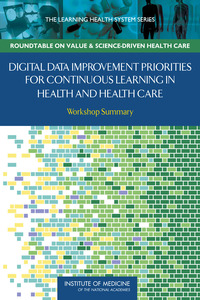This article was originally posted in The Health Care Blog
By RICH ELMORE
Last week, five health IT vendors came together to announce the CommonWell Health Alliance, a nonprofit focused on developing a national secure network and standards that will:
- Unambiguously identify patients
- Provide a national, secure record locator service. For treatment purposes, providers can know where a patient’s records are located.
- Enable peer-to-peer sharing of patient records requested via a targeted (or directed) query
- Enable patients and consumers to withhold consent / authorization for participation in the network
Unambiguous patient identity matters
In banking, without certainty about identity, ATM machines would not give out cash. And in healthcare without certainty about identity, physicians are working with one hand tied behind their backs.
This problem will never be solved by the Feds. In fact, Congress has restricted any spending on it by the government at all. Industry working together may be the only practical alternative.
CommonWell doesn’t intend to create a national patient identifier. Instead it will use practical, robust identity mechanisms that a patient or consumer could provide to each physician or caregiver. That might be based on a one-way hash of a cell phone number, an email address or a swipe of a driver’s license. The Alliance members will decide on this as part of its standards.
Locating data is critical to clinical decisions
Imagine a cancer patient with a primary care doc they visit in a family practice, a surgical oncologist in private practice, a plastic surgeon and medical oncologist at one academic medical center and a second opinion oncology team at yet another academic medical center.
Chances are those caregivers all using different EHRs, and they may even be in different geographies. The physicians don’t know where the records are. Yet each physician needs real-time access to ALL of the patient’s information with critical clinical decisions hanging in the balance.
CommonWell intends to address these gaps by delivering a secure national record locator service and standards for peer-to-peer targeted queries. Data that is returned to the physician are not stored on the CommonWell network, nor is the data normalized.
Founding members want every health IT vendor to join CommonWell Health Alliance
Those of us in the Alliance are aligned in our desire to be inclusive and welcoming to all. The founding members are making significant commitments of money and product developer time for the good of each patient and physician.
I have personally worked with the thought leaders of this effort over several years on ONC initiatives, including the Direct Project and Meaningful Use standards for Stage 2, and I can vouch for their integrity, goals and expertise. They’ve thought this approach through carefully, not only technically, but also in connection with governance, policy, privacy and security.
Allscripts and the CommonWell Health Alliance are committed to practical, standards-based solutions that can make healthcare safer and more responsive to the physician and patient. To that end, the Alliance looks forward to working collaboratively with the Office of the National Coordinator for Health IT, other vendors and with standards bodies to achieve these objectives.













